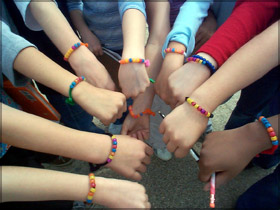
Figure 1: Students wearing solar beads on Sun-Earth Day.
"Sun-Earth Day is comprised of a series of programs and events that occur throughout the year culminating with a celebration on or near the Spring Equinox. Each year we wrap a fresh new thematic approach around Sun-Earth science while highlighting Heliophysics scientists, their missions, and research."
This year's theme is 'Solar Max – Storm Warning!' We will prepare you to explore the violent nature of our Sun at the peak of solar activity and share discoveries that come from NASA's heliophysics missions during this exciting period.
This website will continue to be populated with the latest information about our upcoming programs, background resources, and sample activities. Be sure to join our social media network for the latest information and images
Over the past twelve years, the Sun-Earth Day Team has coordinated education and public outreach events that highlight NASA Heliophysics research and discoveries. The team's strategy involves using celestial events, such as total solar eclipses and the Transit of Venus, as well as Sun-Earth Day during the March equinox, to engage K-12 schools and the public in space science activities, demonstrations, and interactions with space scientists.
In partnership with NASA EDGE, the Sun-Earth Day team will produce video and webcast programming that will be shared with formal and informal education audiences worldwide. The award winning NASA EDGE team is known for their offbeat, funny and informative look behind the NASA curtain. Their guests include scientists, educators and students who will! If you've ever wanted to learn about NASA but thought you needed to be a rocket scientist, wait no longer!
In collaboration with partners that include science centers and museums around the world, Heliophysics missions, NASA Edge, NASA Educator Resource Centers, professional Societies, Amateur Astronomers and others, we produce webcasts, other multi-media, and print resources for use by school and informal educators nation-wide and internationally. We provide training and professional development to K-12 educators, museum personnel, amateur astronomers, Girl Scout leaders, etc., so they can implement their own outreach programs taking advantage of our resources. A coordinated approach promotes multiple programs occurring each year under a common theme.
Over $2 billion in satellite technology was damaged or destroyed during the last sunspot cycle.